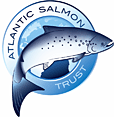Break-out session 1. Hydromorphology (covering topics 1-4).
Group A
Group B
Group C
Group A:
What is the state-of-the-art in hydromorphology in terms of concepts, methodologies, and tools available to assess the current and past physical status of fluvial systems?
The term hydromorphology is “inaccurate”
- Encompasses geomorphology and hydrology
- Includes the channel, the floodplain, and the riparian ecotone
- “Sub-disciplines” include:
- Hydraulics
- Sediment transport
- Morphodynamics
- Geotechnical engineering
- Hydrology
- Riparian and biological drivers
State of the art concepts
- Dynamism
- Complexity
- The river/catchment is an open system
- Connectivity
- Recognition of scales of processes (catchment vs. reach)
Methods/tools
- Historical, analogue, theoretical, experimental
- Reconnaissance level survey (river styles, fluvial audit, RGA etc.)
- Modeling methods (Netmap, Ripple, Shalstab, etc.)
- Remote sensing tools (LiDAR, thermal imagery, satellite imagery, CASI, hyperspectral, etc.)
- Hydraulic models (HEC-RAS, 1-D and 2D flow models)
- Hydrologic models (DHSVM, HSPF, SCIMAP)
- Morphodynamic models (similar details could follow, but we ended here to address methods that are used for historical/current comparisons)
- (NOTE: management tools and approaches may lag behind the state of the art)
Methods/tools for comparing reference to current condition
- Combinations of methods are common
- Tools vary with scale and objective
- Tools for quantifying processes
- Sediment supply and transport
- Sediment budget
- Models
- Channel form
- Historical assessment
- Analogue
- Modeling
- Sediment supply and transport
- Due to time constraint, at this point changed topic to general considerations
General points in selecting methods/tools
- Relevance of various metrics/tools to biota/ecology
- Consider explicitly the time spatial scales of responses
“Summary” points
- Concepts are somewhat ahead of tools and methods
- More tools are available to assess current state than to compare current condition to historical
- Scales of tools vary with scales of problem (pressure or cause)
- Do key concepts also apply to or inform ecological responses?
- Risk-based or probability approaches are important at large scales
- A key future challenge is the modeling of channel migration and multi-channel systems
Group B:
Is the concept of hydromorphological reference condition useful and meaningful? Should it be differently defined in systems of varying degree of human impact?
Yes!
- WFD says we have to use the concept
- Stakeholders – flood risk management
- Status mis-match for various reasons
- “Field of dreams”
- Structural metrics (bad?)
- Process-process
- Other frameworks
- Catchment-riparian-river
- Reference condition guidance – biology, hydromorph?
- H-M reference condition = sustainable, no maintenance
- Climate change, land use change
- Cultural landscapes
- Properties of reference systems
- Indicators of reference systems
- Ecosystem services
- World outside of WFD: HM ‹-› functions
- Resilient to even big rare events – genetic signature?
- HM refcond not equal to ecol refcond (in some cases at least)
- WFD is a big leap forward
- GIG, what is achievable in 2 ½ years
- Floods directive – second round of RBMPs
- Typologies
- Ecological reference condition
- Hydromorph – Montgomery and Buffington + extra types
- Process
- Probabilistic implementation
Question 2 (HM assessments)
- A. linked to ecosystem
- B. in its own right
- Exposed riverine sediments natural or anthropogenic?
- State shifts - indicators
- Reference => self-sustaining (but self-sustaining => reference?)
- Exotic types, unique
- Scales again
- Preconceptions/values, e.g.,
- Swedish rivers, boulders removed,
- Scottish rivers, salmon fishing
- Habitats directive
- Takes precedence over WFD
- Stds lag behind WFD?
- HM reference condition require catchment context
- Same for ecological reference conditions
Group C:
What are the legislative requirements for defining hydromorphology in fluvial systems? Required timescales, knowledge gaps and practicalities of watershed-wide application.
What is hydromorphology?
- We have working understanding and definition within WFD
- But still debate (agree to disagree) about what it is
What is the most appropriate time horizon for management?
- 10 yrs, 30 years … Scale relevant for hydromorph processes and recovery
- Monitoring and time scales to ensure compliance
- Needs to be able to detect and quantify variability
- What should units be? (reaches? Catcments?)
- Issue: what percent of catchment can be degraded for it to still attain “good” status?
- Do monitoring/assessment tools tackle this? (MiMAS)
- Need to consider spatial relationships between activities that degrade habitats
- Upstream – downstream controls
Research needs/knowledge gaps
- Interactions between stressors
- Additive,synergistic?
- How important is hydromorph really?
- Nutrients more important
- Need to come of the channel deal explicitly with land-use for WFD compliance
- Or are riparian buffers enough?
- Do thresholds exist? Where are they?
- How can we incorporate uncertainty into management actions such as restoration?
- How much fragmentation can the landscape take?
- Role for landscape ecologists?
Break-out session 2. Linking hydromorphology to ecology (covering topic 5)
|
Updated: 23 Jan 2024, Content by: HM
|






